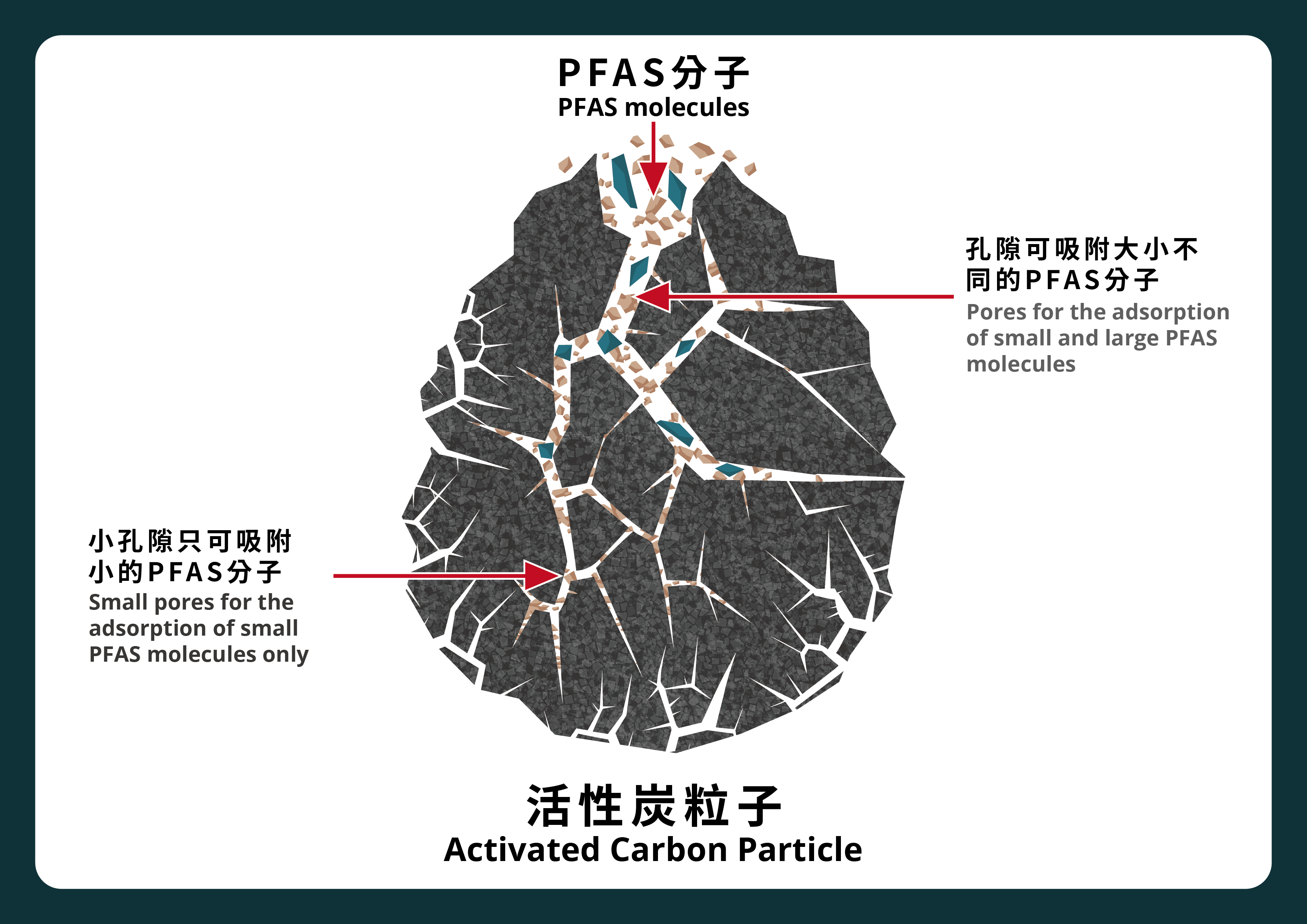

According to the WHO publication "PFOS and PFOA in Drinking Water", the United States Environmental Protection Agency (USEPA) Drinking Water Treatability Database and specific case studies from European countries indicated that the activated carbon adsorption water treatment process in Hong Kong's water treatment plants can effectively to remove PFAS during drinking water treatment. Activated carbon (see Figure 4) is a highly porous material with a large surface area, which makes it effective at adsorbing and removing PFAS from water (see Figure 5). In addition, water treatment processes such as reverse osmosis and ion exchange can effectively remove PFAS. Currently, the WSD has applied reverse osmosis technology at the Tseung Kwan O seawater desalination plant to produce potable water. The WSD continues to monitor the levels of PFAS in both raw water and drinking water, making timely adjustments to the water treatment processes to ensure the safety of drinking water.


Conclusion
Hong Kong's drinking water meets the "Hong Kong Drinking Water Standards" and the World Health Organization's (WHO) Guidelines for Drinking-water Quality, making it safe for consumption. The WSD will continue to closely monitor the research progress and guidelines from the WHO, regularly reviewing the HKDWS to ensure ongoing safety of the drinking water.